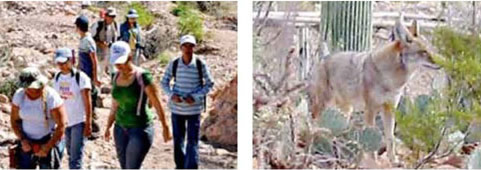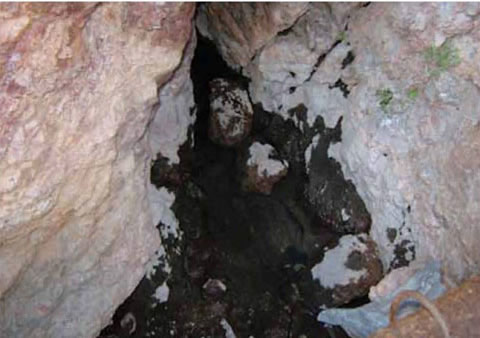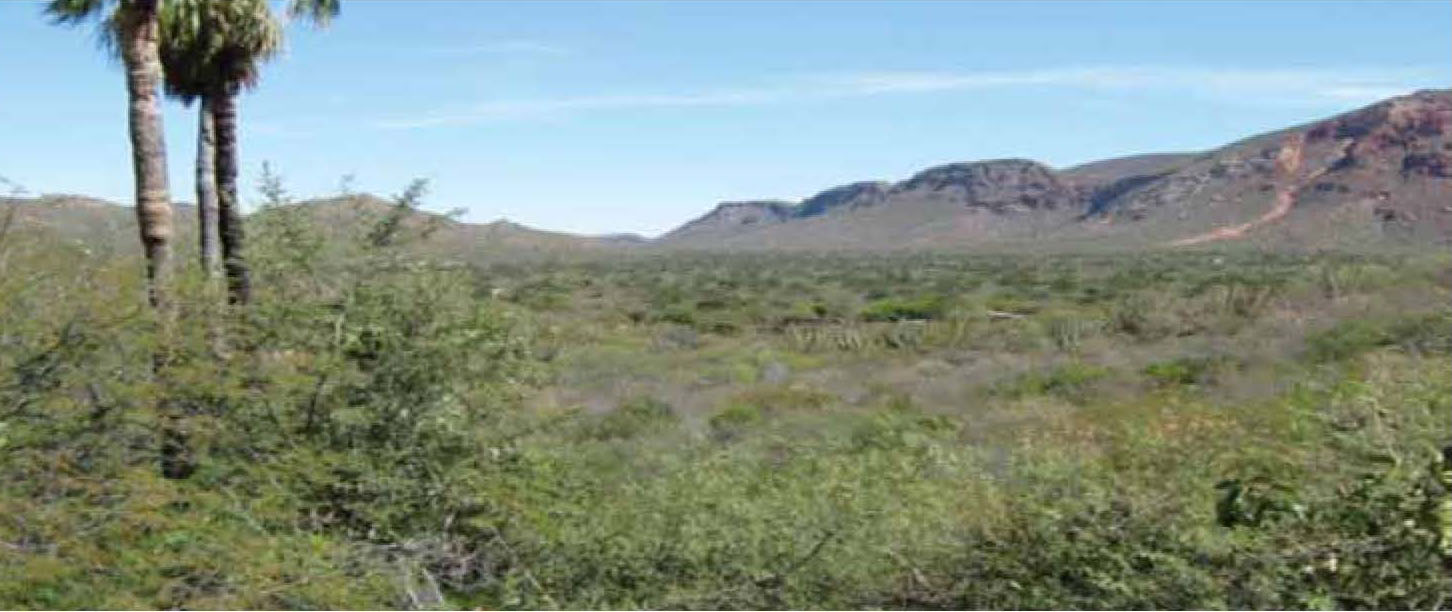
Aguaje Robinson (a series of natural pools) is located north of Guaymas, Sonora. It is an oasis in the desert, an attraction of international caliber and still mostly unknown.
It is a part of the Sierra del Aguaje that, because of its inaccessibility, is seldom visited by residents of Guaymas, let alone people from other parts of the world. From the little that is known about the springs, it is believed that the name comes from a family named Robinson that lived in the area long ago.
These pools are connected with other natural wonders in the Sierra del Aguaje, such as the Cañón de Nacapule in neighboring San Carlos.
Looking at the larger picture, the Sierra del Aguaje is located within the mountainous chain of the western Sierra Madre, which in Sonora is known by its indigenous name Bacatete. The chain traverses the states of Sonora, Chihuahua, Sinaloa, Durango, Zacatecas, Aguascalientes, Nayarit, and Jalisco.
The flora and fauna of the Sierra del Aguaje are part of a natural order extremely important to humans, a fact that can be better appreciated after having made the four hour round-trip on foot from the parking area to the aguaje.
Desert springs have always produced oases like Aguaje Robinson although those of the Sahara Desert and the Arabian Peninsula are better known. Wherever oases are found, they nourish distinctive communities of flora and fauna.
In Latin America, springs originating from a subterranean aquifer below a plain and rising to the surface to form pools or those that flow underground after having been fed by rain, are called aguajes.
Aguaje Robinson is a perfect case study because it is located within the semi-arid Sonoran Desert. With maximum temperatures of 117° F in July and August, and minimum temperatures on average as low as 46° F in January and February, the hot, dry climate influences the creation of the oasis, above all when it rains.
The flora is one of the things that differentiates this spring from those that exist in tropical climates. The most abundant of these plants are the palms that grow nearby. But in the Sierra del Aguaje, xerophytic plants like cacti, mesquites, ironwood, tumbleweed, creosote bush, palo verde and jojoba are also part of the local flora.
These grow along with pine, fir and oak forests in the lower parts of the Sierra. There are also mesquite forests and desert scrub like those are found in other parts of the municipality.
There has always been a high diversity of fauna found around Guaymas and neighboring areas. The animals at Aguaje Robinson include mammals such as squirrels, rats, rabbits, hares, cuyos (small rodents), deer, wild goats, mountain goats, pronghorn antelope, wild pigs, badgers, skunks, foxes, coyotes, wolves, bobcats, jaguars, onza (a type of wildcat similar to the cougar), mountain lions, and margay. Among the birds there are: snipe, larks, gannets, owls, roadrunners, thrashers, chachalaca (a type of guan), dippers, herons, harriers, sparrowhawks, falcons, sand grouse, , flycatchers, wrens and various pidgeons and turtledoves. The most common reptiles are: arboreal alligator lizards; and Mexican vine, coral and rattlesnakes.
Aguaje Robinson (and the areas that influence it) is one of Guaymas' treasure troves, where tourists and scientists can both enjoy and learn from its natural wonders.

 Washingtonia palms are among the most noticeable plants that grow in the oasis. (Photo: Machángeles Carvajal)
Washingtonia palms are among the most noticeable plants that grow in the oasis. (Photo: Machángeles Carvajal) Rain water filtering down through the mountains forms these springs. (Photo: Mario David Gamboa)
Rain water filtering down through the mountains forms these springs. (Photo: Mario David Gamboa)